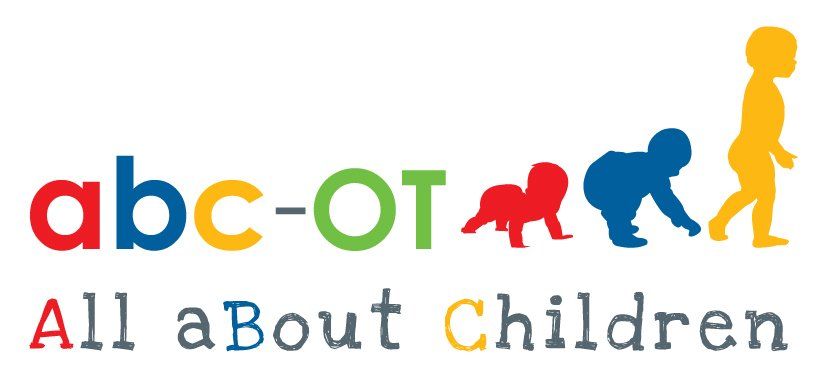News & Articles

A teacher’s job can become very hectic when trying to help each child with their own specific challenges. An occupational therapist (ot) can be an excellent resource and adjunct to helping students overcome challenges and excel in the classroom. Here are examples of signs in the classroom that a child may benefit from an occupational therapy evaluation and treatment.
- The child is a bystander or observer on the playground and rarely tries out the equipment
independently.
- The child has poor posture while sitting in a chair at the table and
during situations of unsupported sitting, for example, during circle time the
child is observed to roll or move around a lot on the floor.
- The child has a difficult time walking in line or being close to other
children.
- The child appears to be irritated by touch from other people but
frequently touches things themselves.
- The child frequently chooses the same familiar game or activity and
avoids learning new motor activities or games.
- The child avoids fine motor activities. They have difficulty
manipulating small objects, using scissors, demonstrate an abnormal pencil
grip, or their hand tires easily during fine motor tasks.
- The child may press too hard or too light on the paper when writing.
- The child seems to have more difficulty than peers putting on their
coat, putting on and tying shoes, and buttoning.
- The child has trouble putting together puzzles or finding a specific
object in the classroom.
- The child frequently runs into things in the classroom, falls to the
floor, or purposely crashes into things or people.
- The child has more trouble than their peers writing in their
workbooks and keeping their things organised.
- The child takes excessive risks and frequently demonstrates
decreased safety awareness.
- The child finds it difficult to maintain attention
- The child fatigues significantly more easily than his peers
- The child fidgets excessively
more that age appropriate or flits from one thing to another
If you see any of these behaviours or characteristics in the kids you know, every-day life may be more difficult to get through for them than for other children, and is going to affect their success in school. Help these kids by seeking out an occupational therapist for techniques and strategies to improve their academic success and overall daily performance. Also, it is important to note that many children will exhibit the above behaviours and may or may not require Occupational Therapy (OT) intervention therefore it is important to consult with an OT first.
Remember that all children are different and develop these skill sets at their own pace. However, if you think your child may be struggling with adopting some of the skill areas above, you can contact an occupational therapist.
A teacher’s job can become very hectic when trying to help each child with their own specific challenges. An occupational therapist (ot) can be an excellent resource and adjunct to helping students overcome challenges and excel in the classroom. Here are examples of signs in the classroom that a child may benefit from an occupational therapy evaluation and treatment.
- The child is a bystander or observer on the playground and rarely tries out the equipment
independently.
- The child has poor posture while sitting in a chair at the table and
during situations of unsupported sitting, for example, during circle time the
child is observed to roll or move around a lot on the floor.
- The child has a difficult time walking in line or being close to other
children.
- The child appears to be irritated by touch from other people but
frequently touches things themselves.
- The child frequently chooses the same familiar game or activity and
avoids learning new motor activities or games.
- The child avoids fine motor activities. They have difficulty
manipulating small objects, using scissors, demonstrate an abnormal pencil
grip, or their hand tires easily during fine motor tasks.
- The child may press too hard or too light on the paper when writing.
- The child seems to have more difficulty than peers putting on their
coat, putting on and tying shoes, and buttoning.
- The child has trouble putting together puzzles or finding a specific
object in the classroom.
- The child frequently runs into things in the classroom, falls to the
floor, or purposely crashes into things or people.
- The child has more trouble than their peers writing in their
workbooks and keeping their things organised.
- The child takes excessive risks and frequently demonstrates
decreased safety awareness.
- The child finds it difficult to maintain attention
- The child fatigues significantly more easily than his peers
- The child fidgets excessively
more that age appropriate or flits from one thing to another
If you see any of these behaviours or characteristics in the kids you know, every-day life may be more difficult to get through for them than for other children, and is going to affect their success in school. Help these kids by seeking out an occupational therapist for techniques and strategies to improve their academic success and overall daily performance. Also, it is important to note that many children will exhibit the above behaviours and may or may not require Occupational Therapy (OT) intervention therefore it is important to consult with an OT first.
Remember that all children are different and develop these skill sets at their own pace. However, if you think your child may be struggling with adopting some of the skill areas above, you can contact an occupational therapist.

